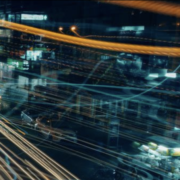Digitisation in logistics and e-documents… advantage or cost?
The current crisis is bringing with it a lot of changes to our industry. For this quarter’s Blue Innovation article, we have caught up with Xavier Lluch, an expert in cost analysis, a veteran of the logistics industry and a regular teacher in our courses, to share with us his thoughts on the emerging trend of e-documents and electronic transport processes. Check out the full article below:

Xavier Lluch i Oms
Professor of the Escola Europea – Intermodal transport
Consultant for Spain for Pionira BV, experts in generic solutions for digital document signing.
The digital revolution is here and was here long before the virus crisis. Perhaps the current crisis allows us to rethink the way we have approached logistics and transport activities so far. The opportunities offered by the new ITC technologies are already changing the way we do business. In the transportation and logistics industry, we now have powerful tools at our disposal to improve the competitiveness of our companies and the range of services offered.
Nevertheless, the implementation of these technologies could be faster than it is currently. For many reasons, but especially because it requires a different approach to the way we do business, a profound cultural change among managers and employees in this sector is necessary. Some business models may make way for new ones.
Are we – are you – ready to take on this challenge? The answer to the question can affect the design of the businesses on offer.
The use of e-documents requires the use of a third party – service providers who are replacing paper in the retention of information and signatures in transport documents with electronic counterparts and with great benefits. You can enjoy other benefits such as attaching images, videos, or other documents with a simple click, avoiding physical contact at the time of signatures, geolocating events… among others. This will save some money, especially from the administration side of any business dealings!
In intermodal transport, it will be possible to use a single document between the first shipper and his consignee, avoiding the traditional ways of having documents physically transferred between different carriers.
But this is only the beginning because when you start using e-documents, you will quickly stop talking about “documents” and instead use the expression “datasets” or “transport datasets”. When you have this information structured in a database that is accessible online and in real-time, there will be a full portfolio of new applications and benefits available, and from this point on you will start not only to save money but to design a new approach to your service concept.
Over the past three years, I have helped a Belgian company, PIONIRA BV, to introduce their solution for digitally signing transport documents in the Spanish market. On their web page (www.pionira.be), you will not find the usual software solutions for printing transport documents, but information about a company that can “offer a generic solution for digitally signing documents”.
It is important to realise the change in the way the company presents their offer because this is much more than a simple reformulation. Pionira offers a new service to connect with existing ERP solutions, linked to the many improvements that digitisation should bring to the logistics and transportation activity.
The solutions exist, they are tested, they do not require any investment and they can easily be connected to other existing apps.
The legal framework is clear for the use of electronic documents in transport. International treaties and national legislation have adapted their processes with a goal to facilitate and promote the use of electronic documents. This past August, the European Parliament approved a new rule that legalised them for all EU countries.
The approval of this European regulation sets the basis for the wide implementation of digital documents across both private and public sectors, by establishing the data and messaging standards as well as the conditions for the interoperability among the different players. In the short term it becomes mandatory for the public sector and voluntary for the private operators, and in a few years it might become mandatory for all. For more information you can check out the Regulation EU 2020/1056 of the European Parliament and of the Council on electronic freight transport information.
Significant companies (shippers, transporters) in Europe are already implementing e-transport documents. Some of the public administrations, mainly in the Benelux countries, have already been active in promoting the benefits of such technologies.
More recently, the main stakeholder’s associations in Spain have reached a compromise, with the acknowledgement of the Ministry of Transport, to promote the use of e-documents. The promotional campaign is expected to continue through September.
Digitisation is in the forefront of the intentions of many private and public policies, especially in the backdrop of the COVID-19 crisis, as e-signing transport documents foregoes any physical contact and therefore minimises the risk of virus transmission. A few days ago “The Economist” published an article titled “Covid-19 stimulates the digitisation of the government” – further highlighting the impact of the changes kickstarted by the pandemic.
We must recognise that one of the obstacles is the lack of a “digital culture” among many of us. The earlier we shorten that gap, the better it will be for the efficiency of our companies and the possibility for all to catch up with the coming changes in the transportation industry across the globe.









